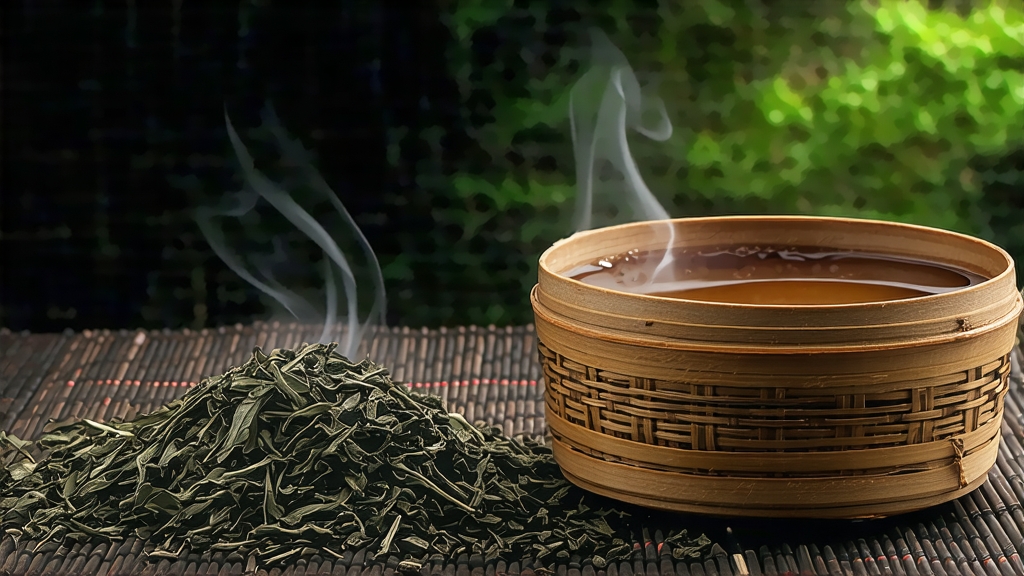
Long before English breakfast tables knew the word “black tea,” caravans loaded with dark, leathery leaves left the granite gorges of northern Fujian. The year was 1646, Qing troops had just swept through Wuyishan, and a garrison demanded the tea farmers speed-dry their harvest. In desperation the villagers spread the leaves over pine fires; the smoke clung, the leaves oxidised fully, and a new flavour—resinous, wine-dark, almost primal—was born. Monks called it Zheng Shan Xiao Zhong; Dutch traders shortened it to “Lapsang Souchong,” and by 1669 the East India Company was auctioning it in London for more than the price of silver. Thus the first black tea in history entered global commerce, carrying with it the terroir of a 1 200-metre-high nature reserve where mist coils around junipers and the Jiuqu Stream bends like a calligrapher’s brush.
Geography still governs authenticity. Only leaves picked within the 60 km² core of the Wuyi National Park may claim the designation “Zheng Shan” (Original Mountain). Here, the soil is a brittle purple conglomerate rich in potassium and manganese; the diurnal swing can exceed 15 °C, forcing the tea bush to store aromatic polyphenols. Two cultivars dominate: Cai Cha, a hardy shrub with small serrated leaves that absorb smoke like parchment, and the more tender Da Bai Ye whose downy buds soften the finish. Between Qingming and Guyu every spring, one leaf and a bud are snipped at the first cock-crow; by noon they must reach the smoke-house, because dusk’s rising humidity would dull the sparkle of the sap.
The craft has evolved into two parallel styles. The traditional “pine-smoke” grade follows the original soldier-forced protocol. Fresh leaves are withered over slow-burning Masson pine logs whose resin has been aged three years; the smoke is cool, 28–32 °C, so the leaf desiccates without baking. After eighteen hours the leaves are rolled on bamboo trays until the cell walls rupture and the juice oxidises into a mahogany liquor. Then comes the firing: a pine charcoal oven at 80 °C for two minutes, repeated seven times, each cycle lowering the temperature by five degrees. The result is a strip so dry it sings when dropped onto porcelain, yet internally it still holds 3 % residual moisture, enough for decades of post-fermentation complexity.
The second, newer “unsmoked” or “craft” style caters to palates that seek the malt and longan sweetness without campfire notes. Here the withering is done in electrically heated troughs at 26 °C; oxidation proceeds in cedar-lined boxes humidified by mountain spring water. A final bake over lychee-wood charcoal lends a whisper of fruit, but no smoke. Purists debate which is the true Souchong; market data show the unsmoked version outsells its tarry ancestor three to one in Europe, yet connoisseurs still pay triple for the pine-scented original pressed into paper-wrapped bricks dated by the lunar calendar.
To brew either style correctly one must respect Fujian’s maxim: “water listens, fire commands.” Start with spring water below 40 ppm hardness; bring it to 95 °C for smoked, 90 °C for unsmoked. Measure 3 g—about a level tablespoon—into a pre-warmed 150 ml gaiwan. The first pour, called “awakening the mountain,” lasts exactly five seconds; discard it to rinse away surface tar and open the leaf. The second infusion, fifteen seconds, yields a liquor the colour of sherry with a rim of glowing copper. Inhale: resin, pine nut, dried longan, a fleeting note of Tibetan incense. Sip briskly; let the liquid skate across the tongue’s anterior sweet zone before swallowing. The finish should echo like a temple bell, returning first as malt, then as cool camphor at the back of the throat. Subsequent infusions add five seconds each; a good Zheng Shan will deliver seven rounds before the flavour collapses into soft honey water.
Professional cupping follows a stricter ritual. Five grams are placed in a 110 ml white porcelain taster; water at 100 °C is filled to the rim and steeped three minutes. The lid is lifted sideways to channel aroma into the nose;